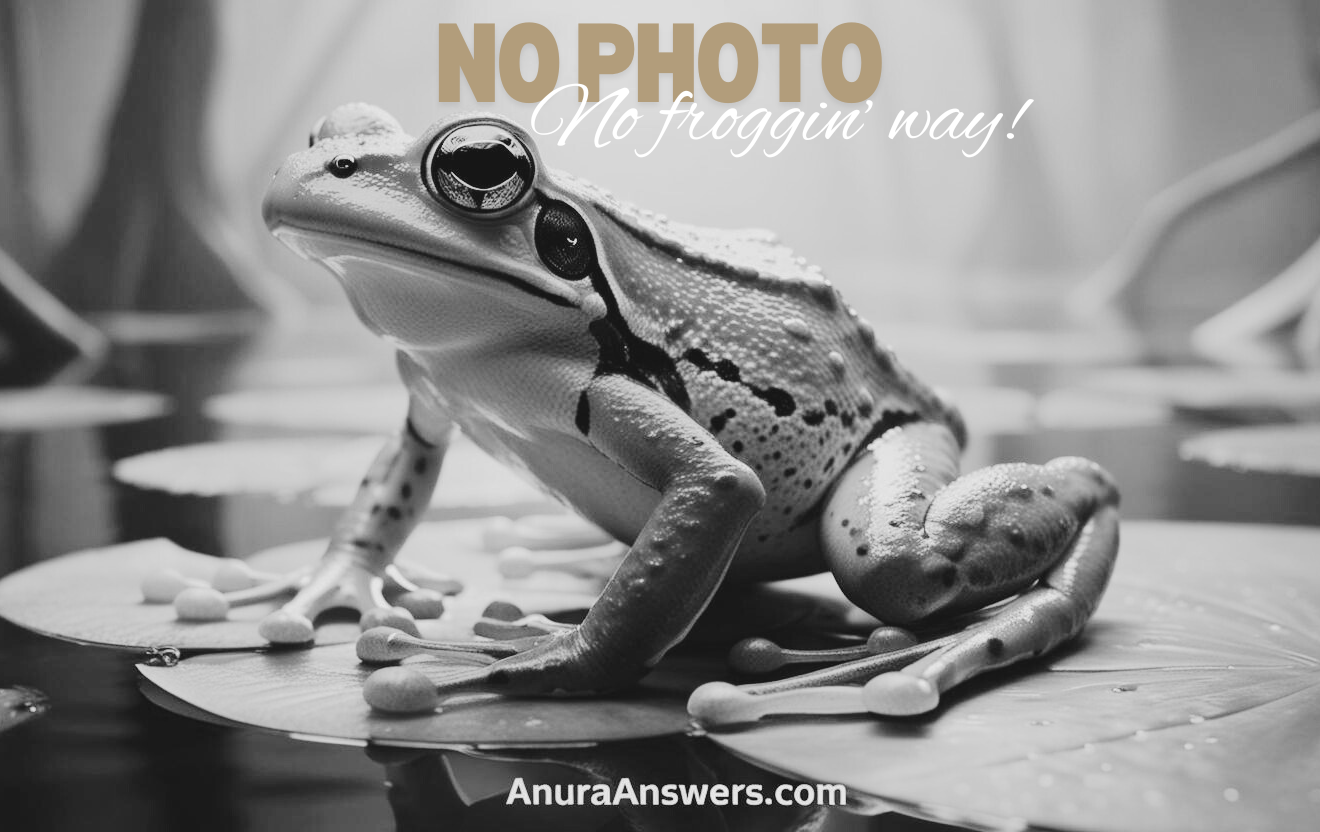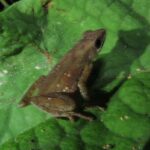Amazophrynella xinguensis: Uncovering the Secrets of Brazil’s Enigmatic Tiny Toad#
Beneath the dense canopy of the Amazon rainforest, hidden amongst layers of damp leaf litter and shadowed ferns, dwells a creature both enigmatic and wondrously small—a tiny amphibian whose life unfolds quietly in the mysterious niches of Earth’s richest habitat. This elusive being is known to science as Amazophrynella xinguensis, a diminutive frog species that only recently captured researchers’ attention, yet embodies the complex beauty and vulnerability of Brazil’s vibrant ecosystems.
With its discovery dating back less than a decade, this little frog, measuring barely longer than an adult fingernail, immediately sparked fascination among herpetologists and conservationists alike. Why study such a seemingly inconspicuous creature? Because beyond its miniature stature, Amazophrynella xinguensis offers profound insights into biodiversity, evolutionary adaptations, and ecological health—and perhaps most importantly, helps us better understand the urgent need for conservation in the Amazon rainforest.
Taxonomy and Classification#
Amazophrynella xinguensis belongs to the Bufonidae family, commonly known as true toads—a large and diverse group comprising approximately 50 genera and hundreds of species globally, sharing evolutionary roots deep in amphibian history. Within Bufonidae, the genus Amazophrynella is notable for its members’ remarkably small size, cryptic appearances, and highly specialized adaptations suited perfectly to the intricate microhabitats of the rainforest floor.
Described scientifically in 2015, the species received its name “xinguensis” from its initial discovery near the Xingu River Basin, a biologically rich and ecologically critical region located within Brazil’s expansive Pará state. Herpetologists closely examining morphological features, vocalization patterns, and genetic markers designated this species as distinctly unique, distinguishing it from other close relatives such as Amazophrynella minuta and Amazophrynella vote. Such detailed classification not only highlights the careful methods of modern science but also reaffirms the biological value concealed within even the smallest creatures.
Natural Habitat#
Brazil’s Amazon forests, famed for their stunning biodiversity and ecological complexity, serve as the exclusive habitat for Amazophrynella xinguensis. More specifically, this frog’s known distribution is concentrated around the lower Xingu River Basin, an area marked by damp, shady undergrowth and abundant moisture—characteristics essential to the species’ survival. Here, beneath towering trees, thick with orchids and vines, the forest floor becomes a dense carpet of leaf litter, mossy logs, and fungi. It is precisely within this microenvironment, among layers of decaying plant matter and humidity-laden soil, that the delicate life of this small amphibian unfolds quietly, unnoticed by casual observers.
Such habitat specificity underscores the species’ specialized ecological preferences. Unlike some amphibians that might tolerate habitat alterations, Amazophrynella xinguensis demonstrates significant reliance on pristine, undisturbed forests, which offer perfect environmental equilibrium—in terms of humidity, temperature, and protection from desiccation and predators.
This finely tuned dependence highlights the complexity of rainforest ecosystems. The presence or absence of Amazophrynella xinguensis can serve as an indicator of the local environmental integrity—a canary in the coal mine for conservationists seeking clues about forest health.
Physical Characteristics#
One might struggle to detect Amazophrynella xinguensis in its leaf litter domain, not merely due to its minuscule stature—adults typically grow no more than 19 millimeters—but also owing to cryptic coloration that neatly blends with its surroundings. Its body exhibits rich, earthy shades of brown interspersed with subtle ochre and reddish mottlings; nuances of color, texture, and pattern converge ingeniously to create perfect camouflage, essential for protection from predators and efficient ambush tactics when hunting prey.
Upon closer inspection under the careful eye of researchers, additional physiological features emerge. Its slender limbs, proportionally elongated hind legs, and remarkably narrow digits grant excellent navigability amidst the dense maze of leaves and roots of the forest floor. The species’ eyes, comparatively large and boldly outlined, offer heightened sensory perception suited for its semi-fossorial lifestyle—always alert for potential insect prey or subtle shifts in environmental conditions.
Subtle yet compelling physical adaptations such as these underscore evolutionary resilience, optimized to carve out niches in even the most competitive ecological arenas. Minute glands on the skin excrete mild yet effective toxins, a defensive strategy keeping predators hesitant. Thus, although diminutive, Amazophrynella xinguensis has evolved to survive and thrive within an exceedingly complex ecological tapestry.
Behavior and Life Cycle#
The humid twilight hours of dusk and dawn mark peak activity for Amazophrynella xinguensis, as individuals emerge cautiously from concealed retreats beneath decaying debris. Its primary diet consists of tiny arthropods and small insects, skillfully hunted among leaf litter detritus. Precise movements, quick lunges, and adept tongue mechanics assist this frog in capturing even fleeting prey with surprising agility.
During the rainy season, the damp air pulsates with delicate, muted calls of frogs seeking mates—a chorus subtle enough to blend into the hum of the rainforest yet uniquely distinguishable to conspecific ears. Males perch atop logs, leaves, or small elevations to deliver repetitive yet gentle vocalizations, advertising suitability to discerning females.
Once courtship concludes, females deposit tiny egg clusters amid moist leaf litter or shallow pools created by rainfall. Unlike the larvae of larger amphibian species that require expansive bodies of water, tadpoles of Amazophrynella xinguensis demonstrate remarkable resilience. Quickly hatching, they develop rapidly, thriving in temporary pools or minute water-filled depressions amid tree roots or fallen branches. This swift metamorphosis into juvenile frogs reflects evolutionary adaptations toward vulnerability reduction and predation avoidance.
Ecological Role#
Despite their inconspicuous size and behavior, frogs like Amazophrynella xinguensis hold enormous ecological importance. They function as critical links in the local food webs, effectively regulating insect populations. In turn, these frogs serve as prey items for various predators—from larger amphibians to birds and small reptiles—constituting a key nutritional resource within the ecosystem hierarchy.
Their skin permeability and sensitivity to environmental fluctuations (such as moisture, water quality, and contaminants) render amphibians vital bioindicators. Thus, shifts in Amazophrynella xinguensis populations may hint at subtler ecosystem dysfunctions or broader environmental disturbances. In short, the presence, abundance, or absence of such species furnishes scientists with essential insights, guiding conservation priorities and management decisions.
Threats and Conservation Status#
Unfortunately, the very specificity that allows the species to thrive represents its greatest vulnerability. Limited geographical range and strict habitat dependencies render Amazophrynella xinguensis particularly susceptible to human-induced threats. Chief among these are habitat loss, deforestation attributable to logging, agricultural expansion, and large-scale infrastructure projects—most notably hydroelectric dams within the Xingu Basin.
Climate change further escalates potential risks, altering precipitation patterns and possibly reducing suitable breeding habitats. Compounding these threats, amphibian chytridiomycosis—a deadly pathogen devastating amphibians globally—presents another significant challenge.
Currently not yet assessed formally by the IUCN Red List due to limited comprehensive data, conservationists believe this species faces stabilizing yet critical conditions. Proactive research, regular bio-monitoring, and designation of protected refuges within core habitats remain urgent conservation imperatives.
Cultural and Scientific Significance#
While perhaps not as outwardly charismatic as larger fauna, frogs hold symbolic significance across cultures, typically representing transformations, ecological wisdom, or environmental health. For science, species like Amazophrynella xinguensis permit deeper understanding of evolutionary adaptations, biodiversity richness, and ecological interconnections. Studies focusing specifically on its biology, genetics, and ecological relationships might offer deeper revelations essential for broader Amazonian conservation strategies.
Conclusion: Small in Size, Great in Importance#
The extraordinary story of Amazophrynella xinguensis illustrates vividly that no creature is too small or insignificant to matter. Within its tiny body lies a world of ecological importance, evolutionary wonders, and crucial lessons humanity must absorb. Protecting this frog, its fragile forest home, and all who share it, signifies not only safeguarding biodiversity but also embodying our collective responsibility toward this planet’s future.
Therefore, let us commit to discovering more about organisms like Amazophrynella xinguensis—and, in doing so, pledge greater efforts in preserving and cherishing the rich tapestry of life hidden deep beneath Amazon’s legendary canopy.







